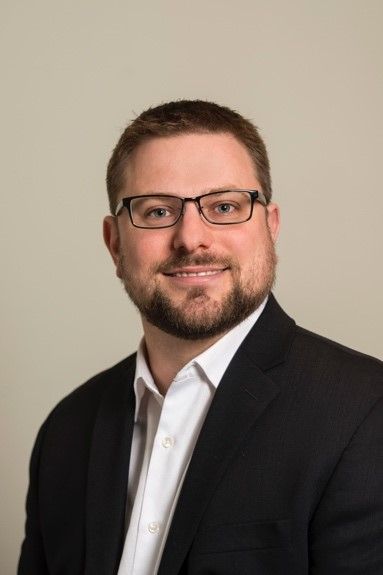-
- Find Care
-
- Visitor Information
- Find a Location
- Shuttles
- Visitor Policies
-
-
- Our Virtual Care Options
- Virtual Urgent Care
- Virtual Visits for Primary & Specialty Care
- Online Second Opinions
- Participate in Research
-
- Contact us
-
- For Innovators
- Commercialization Guide for Innovators
-
-
- Research News
- Alzheimer's Disease
- Artificial Intelligence
-
- Overview
-
- Overview
- Getting Started
- New to Mass General Brigham
- International Patient Services
- What Is Patient Gateway?
- Planning Your Visit
- Find a Doctor (opens link in new tab)
- Appointments
- Patient Resources
- Health & Wellness
- Flu, COVID-19, & RSV
- Billing & Insurance
- Financial Assistance
- Medicare and MassHealth ACOs
- Participate in Research
- Educational Resources
- Visitor Information
- Find a Location
- Shuttles
- Visitor Policies
- Find Care
-
- Overview
- Our Virtual Care Options
- Virtual Urgent Care
- Virtual Visits for Primary & Specialty Care
- Online Second Opinions
-
- Overview
- Participate in Research
-
- Overview
- About Innovation
- About
- Team
- News
- For Industry
- Venture Capital and Investments
- World Medical Innovation Forum (opens link in new tab)
- Featured Licensing Opportunities
- For Innovators
- Commercialization Guide for Innovators
- Contact us
-
- Overview
- Information for Researchers
- Compliance Office
- Research Cores
- Clinical Trials
- Advisory Services
- Featured Research
- Two Centuries of Breakthroughs
- Advances in Motion (opens link in new tab)
- Brigham on a Mission (opens link in new tab)
- Gene and Cell Therapy Institute
- Research News
- Alzheimer's Disease
- Artificial Intelligence
-
- Overview
-
- Overview
- Residency & fellowship programs
- Brigham and Women's Hospital
- Massachusetts General Hospital
- Mass Eye and Ear
- Newton-Wellesley Hospital
- Salem Hospital
- Integrated Mass General Brigham Programs
- Centers of Expertise
- Global & Community Health
- Health Policy & Management
- Healthcare Quality & Patient Safey
- Medical Education
- For trainees
- Prospective trainees
- Incoming trainees
- Current trainees
- Continuing Professional Development
Why Are Strokes on the Rise in Younger People?

Young and middle-aged people may look and feel healthy—and they may believe they are safe from major cardiovascular events. But new research from the American Heart Association shows the rate of stroke has been steadily rising among Americans younger than 49 for the past 30 years.
“Stroke is a leading cause of death, disability, and hospitalization. This is really a wake-up call to patients and health care providers. We need to be serious about managing risk factors, starting as early as possible,” says Christopher David Anderson, MD, MSc, a Mass General Brigham neurologist and chief of stroke and cerebrovascular diseases at Brigham and Women’s Hospital. “Patients should feel empowered to ask their health care providers about their risk factors and what they can be doing to manage them more effectively—before a problem sets in.”
Causes of stroke in young adults
Some rare conditions can predispose some people to stroke at a young age. But most risk factors for stroke in young adults are similar to those in older adults: high blood pressure, diabetes, high cholesterol, and obesity. These conditions are becoming more and more common among younger Americans.
Plus, Dr. Anderson emphasizes additional “silent” risk factors for stroke in young adults:
- Sedentary lifestyle, with too much time working at a desk and not enough time being active
- Substance use, including tobacco, nicotine, alcohol, and illicit drugs
- Stress
“The good news is that these are modifiable risk factors. Nobody is destined to have a stroke. You may be at an increased risk due to things like family history and genetics. But treating your other risk factors and taking charge of your health is an effective strategy, and it can prevent stroke risk from taking hold,” Dr. Anderson says.
People in certain demographic groups are also at higher risk of cardiovascular conditions, including stroke, Dr. Anderson says.
“The health conditions that lead to stroke and strokes themselves are more prevalent in traditionally disenfranchised populations. We are seeing even higher rates in populations of African descent, Hispanic descent, and East Asian populations,” he says. “In addition, the South and mid-South represent the ‘Stroke Belt’ in the United States due to a confluence of socioeconomic, racial, demographic, and lifestyle factors.”
He encourages people in those categories and their health care providers to be proactive in talking about risk factors. This can help ensure they receive interventions in a timely fashion, Dr. Anderson says. Managing risk factors does not always mean taking medications, particularly in younger adults. Reducing stroke risk starts with everyday choices such as a eating healthier foods, getting more aerobic exercise, and getting better sleep.
Recognizing the signs of stroke in a young person
If a stroke is identified early and you get prompt medical intervention, you are more likely to have a good outcome. Therefore, Dr. Anderson says, it’s important for people of all ages to recognize the signs of stroke and know when to get help.
“If it’s recognized early, we can even stop a stroke, and there are multiple treatments that we can use in the first few hours to 24 hours after a stroke to prevent the most serious effects and complications,” Dr. Anderson says.
He recommends that young adults learn the “B.E. F.A.S.T.” method for stroke identification:
- Balance: Are you experiencing sudden loss of balance or dizziness?
- Eyes: Do you have any loss of vision?
- Face: Does your face or your smile look uneven, or is one side of your face drooping?
- Arm: Is one arm or leg hanging down, or do you feel weak on one side?
- Speech: Are you having trouble speaking, communicating, or understanding others? Is your speech slurred?
- Time to call 911.
Learning about risk factors for stroke in young adults
Many people think that stroke is something only their parents or grandparents have to worry about. “But these risks are present even when you look like you’re in the healthiest years of your life. So we need to address these risk factors assertively,” Dr. Anderson says. “Even if you don’t know what you’re supposed to do, knowing that you need to ask is important. Young people are in a uniquely good position because they tend to be technologically savvy and have access to helpful educational tools.”
He recommends a few resources to learn about your personal risk for stroke:
- Mass General Brigham’s experts in brain health: The McCance Center for Brain Health helps people maximize brain health. The center’s doctors identify risk factors, improve brain health, and help prevent strokes, dementia, and late-life depression.
- McCance Brain Care Score: The Brain Care Score is a questionnaire that asks about your physical health, lifestyle, and social/emotional health. Then it provides a score that quantifies your brain health and risk for adverse events such as stroke. Finally, it recommends ways to decrease your risk. The tool is available in English and Spanish, and it can be used on your own or with a health care provider.
- Life’s Essential 8: This American Heart Association resource highlights Life’s Essential 8 factors that have the most influence on cardiovascular health. Eat better, quit tobacco, get healthy sleep, manage weight, control cholesterol, manage blood sugar, and manage blood pressure.
Changing the way we think about stroke
“Stroke rates in older Americans have actually gone down because the American Heart Association has worked very diligently to educate people and intervene,” Dr. Anderson says. “It’s time for us to start to implement those same strategies in younger people who we wouldn’t traditionally think are at risk for cardiovascular disease and stroke.”
He hopes the data showing an increase in strokes in young adults will lead to systemic changes. For example, employers can implement programs to increase activity, improve nutrition, and decrease stress among employees.
“When these changes are implemented earlier in life, they pay dividends not only in terms of prevention of young stroke, but also improve health overall. But it takes effort. It’s not something that your employees are going to do on their own if they’re constantly under the sort of stress and long work hours that are traditional now in the American sort of working life,” Dr. Anderson says.
